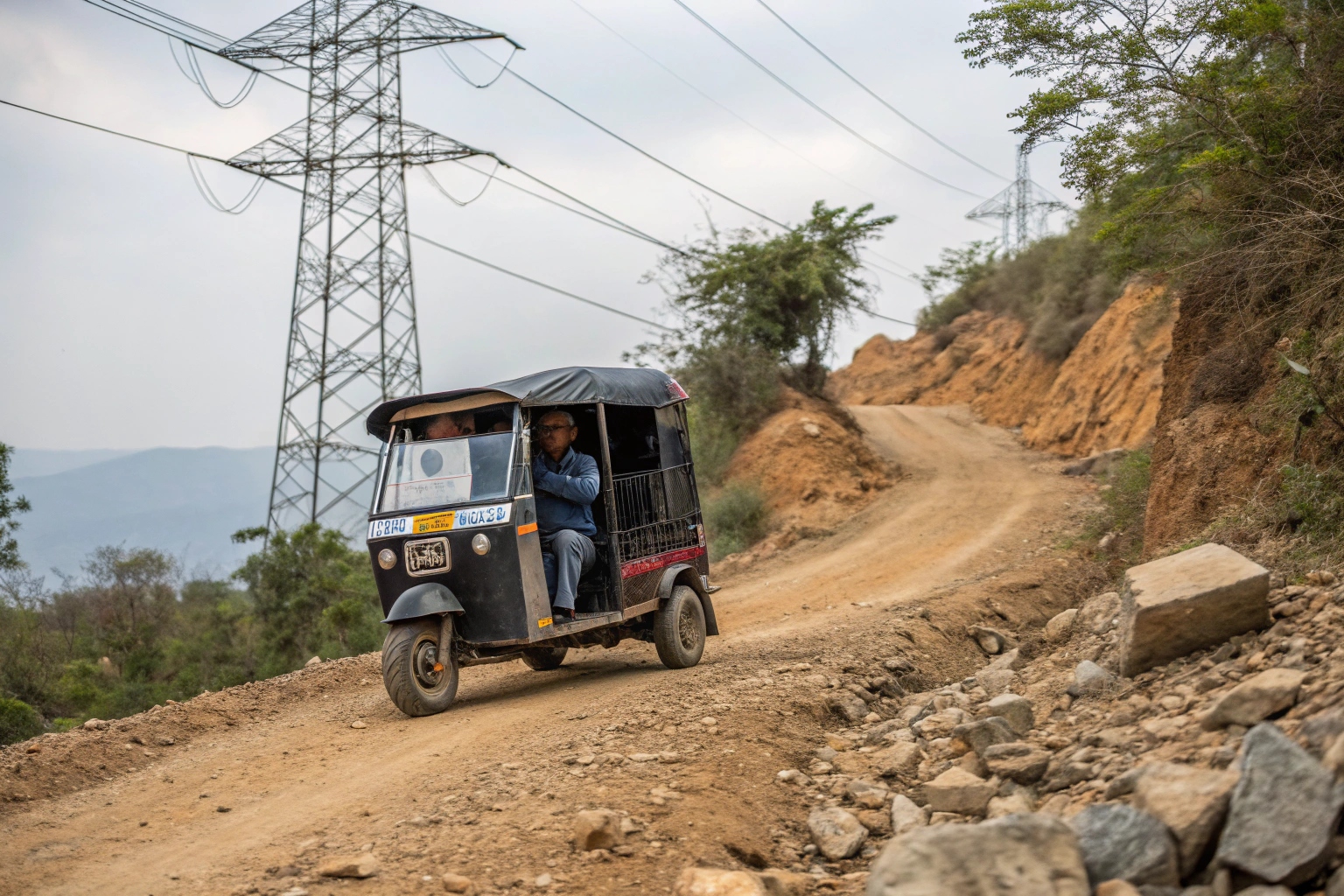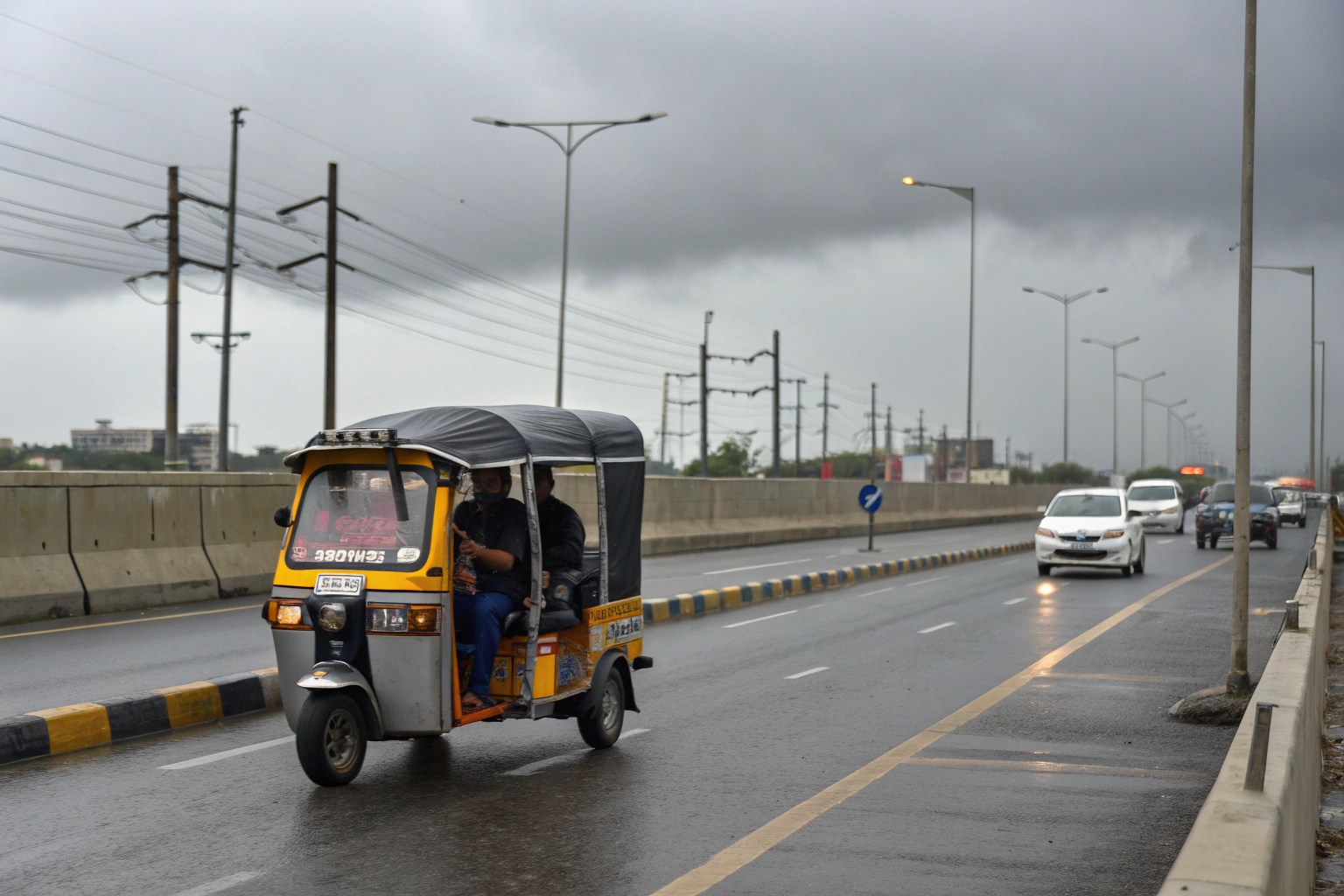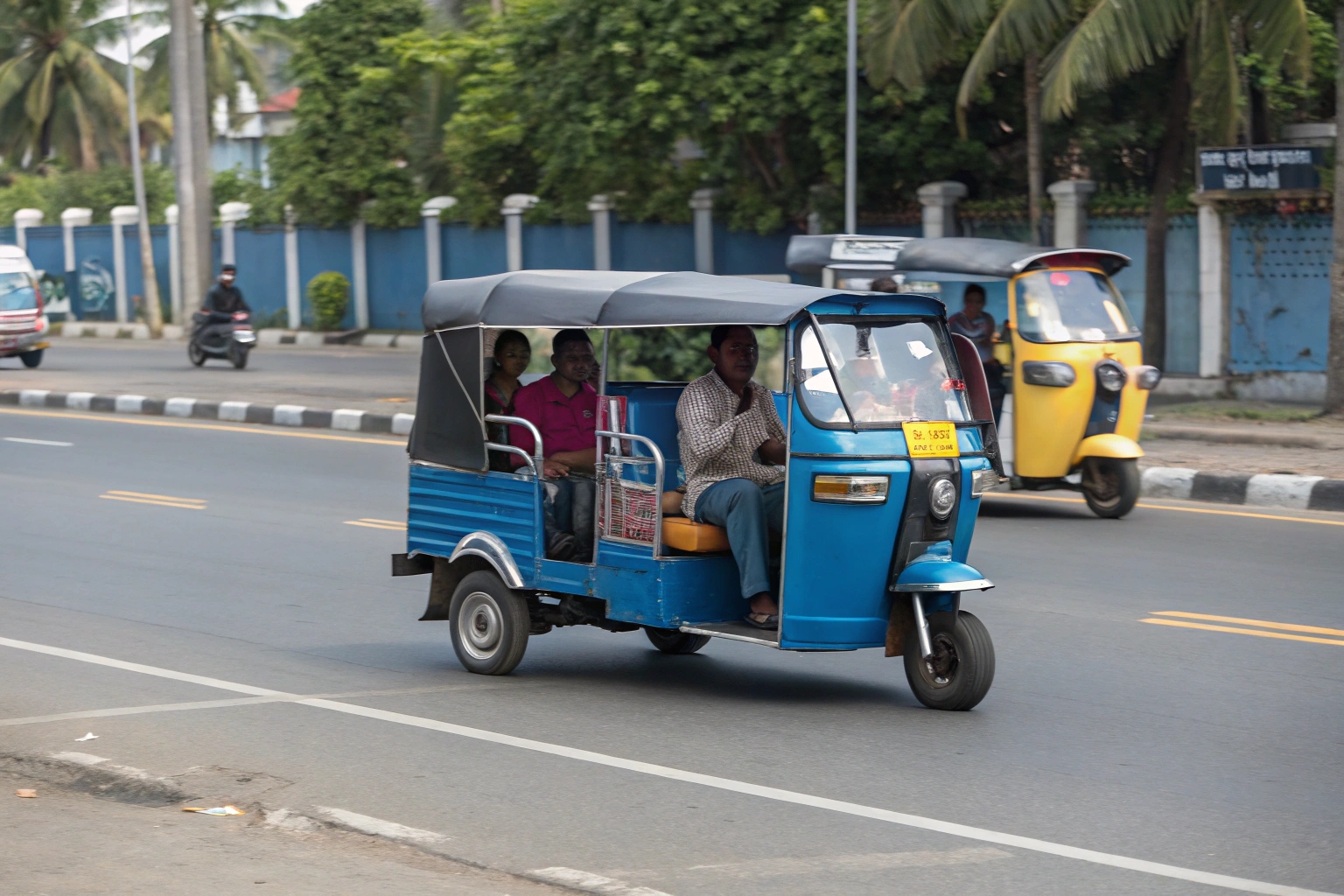50 km/saat hıza ulaşacak şekilde reklamı yapılan bir elektrikli tuk-tuk filosu ithal ettiniz, ancak şehrinizin yollarında ancak 35 km/saat hıza ulaşabiliyorlar. Artık sürücüleriniz şikayet ediyor ve işiniz yavaş görünüyor.
Elektrikli bir tuk-tuk'un hızı, motor devri ve kontrol cihazı tarafından belirlenir, ancak gerçek dünyadaki en yüksek hız, yükten, araziden ve yerel yasalardan büyük ölçüde etkilenir. Fabrika ayarları ile gerçek çalışma ortamı arasındaki dengedir.

Gibi bir fabrika that exports globally, one of the first questions I always get is, "How fast can it go?" Cevap asla tek bir sayı değildir. Araca yerleştirebileceğimiz hız ile gerçekte alacağınız hız iki farklı şey olabilir. Ağır yükler için tasarlanmış bir tuk-tuk, taksi olarak yolcu taşımak için tasarlanmış olandan farklı hız önceliklerine sahiptir. Hızı neyin kontrol ettiğini anlamak, pazarınız için doğru ürünü sipariş etmenize ve hayal kırıklığını önlemenize yardımcı olur.
Hangi Teknik Faktörler Elektrikli Tuk-Tuk Hızını Doğrudan Etkiler?
Farklı motor ve kontrolörlerin yer aldığı teknik özellik sayfalarına bakıyorsunuz ancak hangi kombinasyonun işletmenizin ihtiyaç duyduğu hızı sağlayacağını bilmiyorsunuz. Bu karışıklık kötü bir yatırıma yol açabilir.
Üç temel teknik faktör motorun maksimum devri, kontrol cihazının programlanmış hız limiti ve arka akstaki dişli oranıdır. Daha yüksek voltaj daha yüksek motor devrine olanak sağladığından sistem voltajı (V) da büyük bir rol oynar.

Fabrikamızda, birlikte çalışması gereken birkaç temel bileşeni kullanarak bir aracın potansiyel hızını oluşturduğumuzu söyleyebilirim. Dikkatlice dengelenmiş bir sistemdir. Bir parça uyumsuzsa beklediğiniz performansı alamazsınız. Örneğin, bir yüksek hızlı motor Kontrolörün içine programlanmış bir düşük hız limiti varsa işe yaramaz. Ana teknik parçaların hızı nasıl kontrol ettiği aşağıda açıklanmıştır.
| Teknik Faktör | Hızı Nasıl Etkiler? | Fabrika Değerlendirmesi |
|---|---|---|
| Motor devri | Bu, motorun maksimum dönüş hızıdır. Daha yüksek RPM değerine sahip bir motor, daha yüksek bir azami hız potansiyeline sahiptir. | Aracın işi için tasarlanmış belirli devir değerlerine sahip motorlar sağlıyoruz (örneğin, yolcu taksisi için daha yüksek devir). |
| Denetleyici Limiti | Bu bizim tarafımızdan fabrikada ayarlanan elektronik bir regülatördür. Güvenlik veya yasal kurallara uymak için en yüksek hızı sınırlayabilir. | Bu çok yaygın bir istektir. Kontrol cihazını müşteri ihtiyaçlarına ve ithalatçı ülkenin düzenlemelerine göre programlıyoruz. |
| Dişli Oranı (Aks) | This translates the motor's rotation into the wheels' rotation. A "high-speed" oranı daha yüksek azami hız sağlar ancak daha az çekme gücü (tork) sağlar. | Bu kritik bir seçim. Oranları ana kullanıma göre eşleştiriyoruz: ağır yükler için yüksek tork, taksiler için dengeli hız. |
| Sistem Gerilimi | 72V gibi daha yüksek voltajlı bir sistem, motorun 60V gibi daha düşük voltajlı bir sistemden daha hızlı dönmesini sağlar. | 72V sisteme yükseltme, müşterilerin daha fazla hız elde etmesinin yaygın bir yoludur ancak uygun bir motor ve pil gerektirir. |
Yol ve Yük Koşulları Gerçek Dünyadaki e-tuk Hızını Nasıl Etkiler?
Yeni tuk-tuk'unuz mükemmel bir yolda boşken en yüksek hızına ulaşır. Ancak yolcular ve kargo söz konusu olduğunda buna ayak uydurmak zorlaşır, bu da işinizin güvenilmez ve yavaş görünmesine neden olur.
Ağır yükler ve yokuş yukarı tırmanmalar, motoru sadece hareket etmek için daha fazla güç kullanmaya zorlar, bu da doğrudan azami hızı düşürür. Rüzgar direnci ve zorlu yollar da sürtünme yaratarak aracın fabrikada belirlenen hızının daha da yavaşlamasına neden olur.

Fabrikada test ettiğimiz en yüksek hız ideal koşullardadır: düz, pürüzsüz bir yüzeyde tek bir sürücü. Ancak dünyanız bir test pisti değil. Her ekstra kilogram ağırlık ve her eğim derecesi motora karşı savaşır. Müşterilerime her zaman günlük gerçeklikleri hakkında düşünmelerini söylerim. Bangkok'un düz sokaklarında son derece hızlı olan bir araç, Peru'daki bir şehrin engebeli banliyölerinde çok yavaş gelebilir. Reklamı yapılan hızın her koşulda bir garanti değil, bir başlangıç noktası olduğunu anlamak önemlidir. İşte gerçek dünyada sizi yavaşlatacak en büyük faktörler.
| Gerçek Dünya Faktörü | Hız Üzerindeki Etki | Alıcılara Tavsiyem |
|---|---|---|
| Araç Yükü | Önemli azalma. Her yolcu veya kargo kutusu, hareket etmek için daha fazla enerjiye ihtiyaç duyar ve azami hız için daha az güç kalır. | Her zaman ortalama yükünüzü düşünün. Altı kişilik bir tuk-tuk, aynı motorla üç kişilik bir tuk-tuktan daha yavaş olacaktır. |
| Yol Eğimi | Büyük düşüş. Tepelere tırmanmak, motoru tüm enerjisini torka (çekme gücüne) odaklamaya zorlar ve bu da aracın hızını önemli ölçüde azaltır. | Günlük rotalarınız yokuşlar içeriyorsa, yüksek azami hız değerleri yerine yüksek torklu bir motora ve vitese öncelik vermelisiniz. |
| Rüzgar Direnci | Orta derecede azalma. Bu, özellikle büyük, kapalı kabinli veya kanvas çatılı tuk-tuk'lar için yüksek hızlarda daha belirgin hale gelir. | Bu taksi modelleri için bir faktördür. Açık çerçeveli bir kargo üç tekerlekli bisikleti, tamamen kapalı bir yolcu modeline göre daha az rüzgar direncine sahip olacaktır. |
| Yol Yüzeyi | Küçük düşüş. Toprak, çakıl veya bakımsız yollarda araç kullanmak, düz asfalta göre daha fazla sürtünme yaratarak aracı yavaşlatır. | Yolları yeniden asfaltlayamasanız da engebeli arazinin doğal olarak aracınızın azami hızını düşüreceğini unutmayın. |
Sürüş Alışkanlıkları ve Düzenlemeler Elektrikli Tuk-Tuk Hızını Neden Sınırlıyor?
Mümkün olan en hızlı tuk-tuk'u istiyorsunuz ancak güvenlik ve yerel yasalar konusunda endişeleniyorsunuz. Maksimum hızı zorlamak, araçlarınızı tehlikeli veya pazarınızda yasa dışı hale getirebilir.
Agresif sürüş aküyü daha hızlı tüketir ve güvensiz olabilir; yerel trafik düzenlemeleri ise genellikle üç tekerlekli araçlara katı hız sınırları uygular. Maksimum yasal hız, teknik kapasitesi ne olursa olsun çoğu zaman aracın gerçek maksimum hızı olur.

Mükemmel motora ve ideal yol koşullarına sahip olsanız bile, hıza katı sınır koyan iki son faktör vardır: sürücü ve kanun. Sürekli hızlanmakta olan bir sürücü kendini hızlı hissedebilir ancak aynı zamanda aküyü çok daha hızlı tüketir ve bu da genel performansı ve menzili azaltabilir. Ancak en önemli faktör yerel kanunlardır. Birçok ülkeye ihracat yapıyoruz ve her birinin farklı kuralları var. Örneğin, Filipinler veya Hindistan'daki bazı şehirlerde ticari üç tekerlekli bisikletler için genellikle 40-50 km/saat civarında belirli hız sınırları vardır. Bir ithalatçı olarak bu kuralları bilmeniz gerekir. Yasal sınır 40 km/saat ise 60 km/saat tuk-tuk sipariş etmenin bir anlamı yok. Araçların konteynerden çıkar çıkmaz güvenli ve uyumlu olmasını sağlamak için genellikle kontrolörleri müşterilerimizin yerel yasalarına uyacak şekilde programlıyoruz.
B2B Alıcıları Tuk-Tuk Hızını Değerlendirirken Neleri Dikkate Almalı?
Filonuz için doğru hıza karar vermeniz gerekir. Çok yavaş bir hızın seçilmesi sürücüleri sinirlendirirken, çok yüksek bir hız da aracın amacı açısından güvensiz ve verimsiz olabilir.
Hızı tuk-tuk'un işine göre değerlendirin. Yolcu üç tekerlekli araçlarının güvenli, orta bir hıza (25-35 km/saat) ihtiyacı vardır. Kargo modelleri ağır yüklerde frenleme için sınırlı hıza (40 km/saatin altında) ihtiyaç duyar. Ticari verimlilik açısından taksiler daha hızlı olabilir (55 km/saat'e kadar).

The final decision should not be about getting the "fastest" tuk-tuk. Bu, Sağ iş modeliniz için hız. Bir kişinin ihtiyaçları kargo operatörü şehir içi taksi hizmetinden tamamen farklıdır. Yüzlerce B2B alıcıyla çalışma deneyimime göre, en başarılı olanlar aracın hızını günlük işiyle eşleştiriyor. Daha hızlı bir motor ve akü daha pahalıya mal olur; dolayısıyla ihtiyacınız olmayan veya güvenli bir şekilde kullanamayacağınız hız için ödeme yapmak para israfıdır. Müşterilerimin doğru seçimi yapmasına yardımcı olmak için kullandığım basit bir kılavuzu burada bulabilirsiniz.
| İş Modeli | Birincil Endişe | Önerilen Azami Hız | Neden Bu Hız? |
|---|---|---|---|
| Yolcu Üç Tekerlekli Bisikleti | Yolcuların güvenliği | 25 - 35 km/saat | Bu hızlarda araç stabil, mahallelerde kontrolü kolay ve içindekiler için güvenli. Bu bir yarış değil, rahat bir sürüş. |
| Kargo Tuk-Tuk | Frenleme etkinliği | 40-45 km/saat | 500 kg yükünüz varken güvenli bir şekilde durmak, hızlı gitmekten daha önemlidir. Daha yüksek hız, fren mesafesini tehlikeli derecede uzatacaktır. |
| Tuk Tuk Taksi | Ticari verimlilik | 50 - 55 km/saat | Bu hız, şehir içi ulaşım için verimli olacak ve günde daha fazla yolculuk tamamlayacak kadar yüksek ancak yine de şehir trafiği için güvenli bir aralıkta. |
Çözüm
Doğru tuk-tuk hızını seçmek, aracın kapasitesini amacına uygun hale getirmekle ilgilidir. Filonuzun verimli, karlı ve güvenli olmasını sağlamak için teknik özellikleri gerçek dünya koşulları ve güvenlikle dengeleyin.

